- Home
- Antonia Fraser
Mary Queen of Scots
Mary Queen of Scots Read online
Antonia Fraser is the author of many widely acclaimed historical works including the biographies King Charles II, the recently republished Mary Queen of Scots and Marie Antoinette: The Journey which won the Franco-British Literary Prize in 2001 and was made into a film by Sofia Coppola in 2006. Most recently she has published Love and Louis XIV: The Women in the Life of the Sun King.
Antonia Fraser won a Wolfson History Prize in 1984, was made CBE in 1999, and was awarded the Norton Medlicott Medal by the Historical Association in 2000. She lives in London and has six children and eighteen grandchildren.
By Antonia Fraser
Mary Queen of Scots
Cromwell: Our Chief of Men
King James VI of Scotland, I of England
(Kings and Queens series)
King Charles II
The Weaker Vessel: Woman’s Lot
in Seventeenth-Century England
The Warrior Queens: Boadicea’s Chariot
The Six Wives of Henry VIII
The Gunpowder Plot: Terror and Faith in 1605
Marie Antoinette: The Journey
Love and Louis XIV: the Women in the
Life of the Sun King
Mary Queen of Scots
ANTONIA FRASER
A WEIDENFELD & NICOLSON EBOOK
First published in Great Britain in 1969 by Weidenfeld & Nicolson
This ebook first published in 2010 by Orion Books
Copyright © Antonia Fraser 1969
The moral right of Antonia Fraser to be identified as the author
of this work has been asserted in accordance with the
Copyright, Designs and Patents Act 1988.
All rights reserved. No part of this publication may be reproduced, stored in a retrieval system or transmitted in any form or by any means, without the prior permission in writing of the publisher, nor to be otherwise circulated in any form of binding or cover other than that in which it is published without a similar condition, including this condition, being imposed on the subsequent purchaser.
A CIP catalogue record for this book
is available from the British Library.
eISBN: 978 0 2978 5795 2
This ebook produced by Jouve, France
The Orion Publishing Group Ltd
Orion House
5 Upper Saint Martin’s Lane
London WC2H 9EA
An Hachette UK Company
www.orionbooks.co.uk
For George Weidenfeld
To salute his 90th birthday and
celebrate nearly 60 years of friendship
Contents
Cover
Title
Copyright
Dedication
About the Author
By Antonia Fraser
PART ONE: The Young Queen
1 All Men Lamented
2 England’s Rough Wooing
3 The Most Perfect Child
4 Betrothal
5 Queen-Dauphiness
6 The White Lily of France
7 Mary the Widow
PART TWO: The Personal Rule
8 The State of the Realm
9 Conciliation and Reconciliation
10 Governor Good and Gracious
11 The Fall of Huntly
12 A Husband for a Girl
13 The Carnal Marriage
14 Our Most Special Servant
15 Breakdown
16 The Murder of Darnley
17 The Mermaid and the Hare
18 Lochleven
Plates
PART THREE: The Captivity
19 In Foreign Bands
20 Her Privy Letters
21 My Norfolk
22 The Uses of Adversity
23 Mother and Son
24 The Babington Plot
25 Trial
26 The Dolorous Stroke
27 Epilogue: The Theatre of the World
Appendix
Reference Notes
Bibliography
Index
‘A King is history’s slave.
History, that is the unconscious general swarm-life
of mankind, uses every moment of the life of kings,
as a tool for its own purposes.’
Tolstoy
Illustrations
1 The palace of Linlithgow (Crown copyright. Reproduced by permission of the Ministry of Public Building and Works)
2 Mary of Guise (Photo: Annan. By permission of the Scottish National Portrait Gallery)
3 James v of Scotland (Photo: Annan. By permission of the Scottish National Portrait Gallery)
4 Letter written by Mary aged eleven (By permission of the Scottish Record Office, HM General Register House, Edinburgh, Duntreath Muniments (GD 97) section 3, no. 31)
5 Mary aged nine (Musée Condé, Chantilly)
6 Mary and her husband Francis (Musées Nationaux: Musée du Louvre, Paris)
7 Mary as Dauphiness of France (By permission of the Bibliothèque Nationale)
8 Bust of Mary as Queen of France (Musées Nationaux: Château de Versailles)
9 Diane de Poitiers (Château d’Anet)
10 The deathbed of Henry II of France (By courtesy of the Trustees of the British Museum)
11 The Deuil Blanc portrait of Mary (By gracious permission of HM the Queen)
12 Henry Lord Darnley and his brother Charles (By gracious permission of HM the Queen)
13 Mary’s signet ring (By courtesy of the Trustees of the British Museum)
14 James Stewart, Earl of Moray (Photo: Annan. By permission of the Scottish National Portrait Gallery)
15 Coins struck at the time of Mary’s marriage to Darnley (By courtesy of the Trustees of the British Museum)
16 James Douglas, Earl of Morton (Photo: Annan. By permission of the Scottish National Portrait Gallery)
17 The supper room at Holyrood Palace (Photo: Central Public Library, Edinburgh. From Swarbrick’s Sketches in Scotland, c. 1854)
18 Riccio’s guitar (Photo: B. Fleming. By permission of the Royal College of Music, London)
19 William Maitland (Photo: Tom Scott. By permission of the Scottish National Portrait Gallery)
20 The palace of Holyrood (Crown copyright. By permission of the Controller, HM Stationery Office. Drawings: National Monuments Record of Scotland)
21 Bothwell (Photo: Annan. By permission of the Scottish National Portrait Gallery)
22 James VI and I as a child (Photo: Annan. By permission of the Scottish National Portrait Gallery)
23 George Buchanan (Photo: Annan. By courtesy of the University of Edinburgh and the Scottish National Portrait Gallery)
24 The scene after the murder of Darnley (Facsimile of Crown copyright records in the Public Record Office, by permission of the Controller of HM Stationery Office)
25 Hermitage Castle, Liddesdale (Crown copyright. Reproduced by permission of the Ministry of Public Building and Works)
26 The castle of Lochleven (Photo: the author)
27 The field at Carberry Hill (Facsimile of Crown copyright records in the Public Record Office, by permission of the Controller of HM Stationery Office)
28 Placard of the mermaid and the hare (Facsimile of Crown copyright records in the Public Record Office, by permission of the Controller of HM Stationery Office)
29 Cenotaph of Lord Darnley (By permission of the Trustees of the Goodwood Collection)
30 Tutbury Castle
31 Panel of embroidery at Oxburgh Hall, Norfolk (By permission of the Victoria and Albert Museum and the National Trust)
32 Letter of Mary to Queen Elizabeth (By kind permission of the Marquess of Salisbury)
33 Casket believed to have contained the Casket Letters (By kind permission of His Grace the Duke of Hami
lton and Brandon)
34 Mary’s first letter in English (By courtesy of the Trustees of the British Museum)
35 Queen Elizabeth I (By permission of the National Portrait Gallery, London)
36 Miniature of Mary by Nicholas Hilliard (By permission of Mrs D. Herschorn)
37 First page of a contemporary copy of the Fifth Casket Letter (By kind permission of the Marquess of Salisbury)
38 Medal of Mary by Primavera (By courtesy of the Trustees of the British Museum)
39 Mary and her son James (Photo: Tom Scott. By kind permission of His Grace the Duke of Atholl)
40 Layout at the trial of Mary (By permission of the Radio Times Hulton Picture Library and Jonathan Cape Ltd)
41 Mary’s veil worn at her trial (Photo: John Freeman. By permission of the Earl of Oxford and Asquith)
42 Mary’s rosary and prayer-book (Photo from Treasures of Britain, published for the Automobile Association. By kind permission of His Grace the Duke of Norfolk)
43 Execution of Mary (By courtesy of the Trustees of the British Museum)
44 The tomb of Elizabeth and Barbara Curle
45 Memorial portrait of Mary (Photo: Charles Howard. By permission of the Trustees of St Mary’s College, Blairs, Aberdeen)
46 Monument to Mary above her tomb (Photograph by Kerry Dundas. Copyright: the Gordon Fraser Gallery Ltd)
Author’s Note
I had two principal aims when I began to write this biography. First, being possessed since childhood by a passion for the subject of Mary Queen of Scots, I wished to test for myself the truth or falsehood of the many legends which surround her name. In order to tear away these cobwebs – or in certain cases reverently replace them – I delved into as many published and unpublished sources as I could discover, taking as my starting-point Mary’s own letters and the calendars of state papers (although of course there may well be some sources of which I was unhappily ignorant). Secondly, for the sake of the general reader, I hoped to set Mary anew in the context of the age in which she lived. In the course of my own inquiries I was surprised to discover that despite the enormous quantity of research on the sixteenth century published during the last fifty years, radically changing our attitudes to certain of its aspects, no general life of Mary has yet appeared, taking it all into account. There have been detailed treatments of certain episodes in her life – notably that of the Kirk o’Field murder and the Casket Letters, and later the Babington Plot – and Stefan Zweig’s fascinating psychological interpretation, written in the thirties. But the last full-length biography, giving documentation, was that of T. F. Henderson in 1905. So in the end my two aims converged, and I found myself with the single objective of showing, with as much accuracy as is possible in the light of modern research, what Mary Queen of Scots must have been like as a person.
In the interests of clarity, I have not entered into the various complications of dating in the sixteenth century, i.e. I have ignored the fact that the calendar year was held to start on 25 March during this period, and have used the modern style of dates starting on 1 January throughout. I have also ignored the ten days’ difference between English and European dates in the period of the Babington Plot, due to the fact that the adjustment to the Gregorian calendar was not made in England until the eighteenth century; and, in order to avoid confusion, have given the dates of letters coming from abroad as if they originated in England.
With regard to Scots words and spelling, the documents both in Scots and French – notably Queen Mary’s own letters, which were nearly always written in French – I have translated, adapted to modern spelling, and in certain cases, paraphrased the text, as it seemed to me necessary to make the meaning clear to the general reader today.
It will be found that sums of money relevant to Scotland are given in pounds Scots and those concerning England in pounds sterling – the pound Scots being worth roughly one-quarter of the pound sterling in this period.
The task of writing such a book – covering ground well-trodden by scholars of the present, as of previous generations – would not have been possible without the benefit of their works, which are listed in the bibliography, and whose assistance I gratefully acknowledge. I was also fortunate enough to be able to draw upon the advice of a number of people, whose suggestions concerning the lines of research to pursue were a major contribution to my book (although the conclusions drawn are of course all my own). In the first place I should like to thank Sir James Fergusson of Kilkerran, Keeper of the Register House, Edinburgh, for valuable advice over reading-matter as well as guidance in researches within the Register House itself; Sir Iain Moncrieffe of that Ilk on whose encyclopaedic knowledge of Scottish history I frequently drew; Archbishop David Mathew for advice and encouragement at an early stage; and Father Francis Edwards SJ, Archivist of the English Society of Jesus, for advice and help in researches within the Farm Street Library, including the opportunity to use the notes of the late Fr J. H. Pollen.
I would also like to acknowledge most gratefully the help of the following: Mr Andrews, Clerk of the Works, Westminster Abbey; the Duke of Argyll; Sir Charles Barratt, Town Clerk of Coventry; Mr and Mrs Godfrey Bostock of Tixall, Stafford; Dr C. Burns of the Vatican Archives, Rome; Fr Philip Caraman SJ; Miss Margaret Crum, Deputy Keeper of Western MSS, Bodleian Library, Oxford; Mr Stanley Cursiter; Fr Martin D’Arcy SJ; Dr Chalmers Davidson; Professor A. A. M. Duncan of Glasgow University; the Duke and Duchess of Hamilton and Brandon; Mr R. E. Hutcheson, Keeper of the Scottish National Portrait Gallery, for advice on the authenticity of Scottish portraits of the period; Mr and Mrs W. J. Keswick of Glenkiln, Dumfriesshire; Mr A. H. King of the Music Room, British Museum and Miss Marion Linton of the Music Room, National Library of Scotland for help over Riccio’s music; Mr King, Northamptonshire County Archivist; Mr Eric Linklater; Dr Ida Macalpine and Dr Richard Hunter for additional help on the subject of porphyria, beyond their BMA publication; Mr John MacQueen of the University of Edinburgh, for advice on the literature of the period, and for showing me his paper on Alexander Scott in advance of publication; Dr William Marshall of Peterborough; the Earl of Mar and Kellie; Mr James Michie for his translation of George Buchanan’s poem on page 223; Miss Elizabeth Millar of Jedburgh; Mr J. W. Moore, of Stone; the Duke of Norfolk and his archivist Mr Francis Steer; the Earl of Oxford and Asquith; Mr Peter Quennell; Sir Patrick Reilly, then British Ambassador in Paris, and Mr C. S. de Winton, British Council representative in France, for assistance in the course of French researches; Mr Jasper Ridley (whose own life of Knox was unfortunately published after this book went to press), for suggestions and criticism at the manuscript stage; the Marquess of Salisbury for permission to research at Hatfield House and reproduce certain documents in the illustrations, and also his librarian, Miss Clare Talbot, for special assistance over the Casket Letters; Mr F. B. Stitt, Staffordshire County Archivist; Dr Roy Strong, Director of the National Portrait Gallery, for generous help over the complicated subject of the iconography of Mary Queen of Scots; M. Marcel Thomas, Conservateur en Chef of the Cabinet des Manuscrits, Bibliothèque Nationale, Paris; Mr Hugh Tait of the Department of British and Mediaeval Antiquities, British Museum; Mr F. A. Warner of the British Embassy, Brussels; Mr Neville Williams, Assistant Keeper at the Public Record Office; the late Mr F. Wismark of Madame Tussaud’s; Mr T. S. Wragg, librarian to the Duke of Devonshire at Chatsworth; Canon A. de Zulueta.
I am grateful to G. Bell & Sons Ltd for permission to quote passages from Queen Mary’s Book edited by Mrs P. Stewart-Mackenzie Arbuthnot.
Lastly I should like to thank the Librarian and staff of the London Library; the staff of the Reading Room of the British Museum; my aunt Lady Pansy Lamb who kindly read the proofs; and my mother Elizabeth Longford, who made vital critical suggestions at the manuscript stage, and without whose admirable example I should never have attempted to write the book at all.
ANTONIA FRASER
September 1968
52 Campden Hill Square, London W8
&
nbsp; Eilean Aigas, Beauly, Inverness-shire
Foreword to the New Edition
Mary Queen of Scots was my first love: the character, that is. She was my heroine from when I was eight years old, as a result of a book which I borrowed recurringly from the Oxford Public Library. I particularly fancied the idea of her child attendants, the Four Maries, and I rather think that I included myself as the Fifth Marie in my first version of her story, or even the little Mary herself, since there were no limits to my historical fantasy.
Later the idea of the child queen seemed less interesting than that of the femme fatale, as I poured over Margaret Irwin’s sexy version of the Bothwell abduction scene in The Gay Galliard. Still later, I became interested in the way one woman’s story could be traced like a kingfisher, flashing through the political history of France and Scotland: until the bright bird was caught and made captive in England.
In quite a different way Mary Queen of Scots, the biography, first published forty years ago, was also my first love. I certainly felt all the insecurity, as well as the passion, traditionally associated with that state when I was working on it in the 1960s. The circumstances were these: I was quite unknown as a historian. I was working and writing without any knowledge that there were or would ever be any readers. I imagined the academic world to be populated by a host of angry thistles: although in fact the few academics I did meet – notably Sir James Fergusson of Kilkerran, Keeper of the Records of Scotland – were courteous and helpful. (It is true that Sir James did try to persuade me to write instead about Mary’s counsellor, Maitland of Lethington, on the grounds that he was a far more interesting character; shaking his head sadly when I explained that as a child I had not exactly identified myself with him…)
Furthermore, I was the mother of six young children, the youngest of whom was born in the middle of the task. I experienced the working mother’s paradox: although I never seemed to be alone long enough to study, I nevertheless felt very lonely. At times I even felt quite desperate. With hindsight, perhaps some of this desperation aided me to write with the urgency such an extraordinary tale needed: murder, sex, scandal, imprisonment – all the way to execution on an English block – and to recreate it with the vividness it deserved.

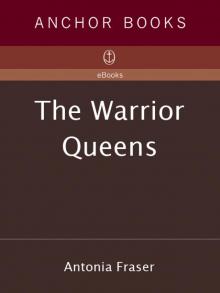 Warrior Queens
Warrior Queens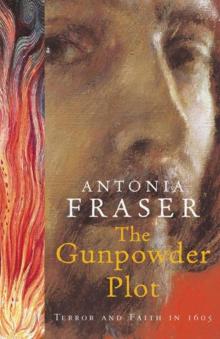 The Gunpowder Plot
The Gunpowder Plot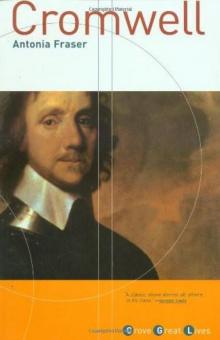 Cromwell
Cromwell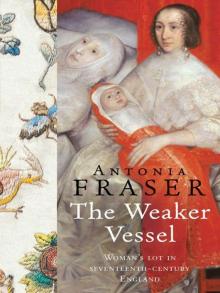 The Weaker Vessel: Women's Lot in Seventeenth-Century England
The Weaker Vessel: Women's Lot in Seventeenth-Century England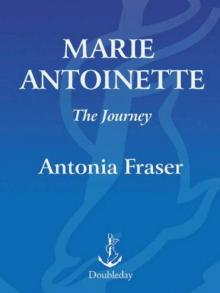 Marie Antoinette: The Journey
Marie Antoinette: The Journey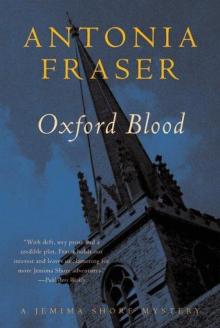 Oxford Blood
Oxford Blood Your Royal Hostage
Your Royal Hostage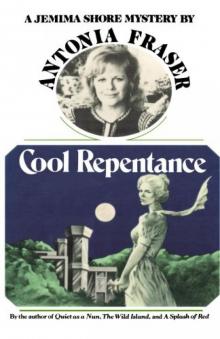 Cool Repentance
Cool Repentance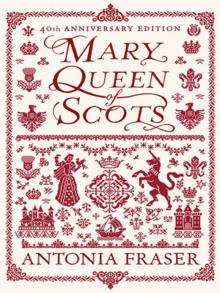 Mary Queen of Scots
Mary Queen of Scots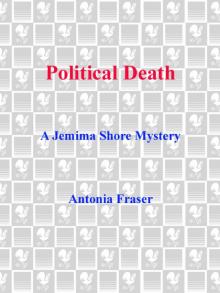 Political Death
Political Death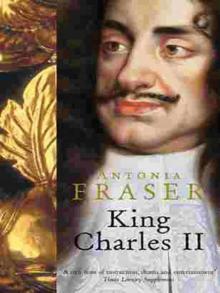 Royal Charles: Charles II and the Restoration
Royal Charles: Charles II and the Restoration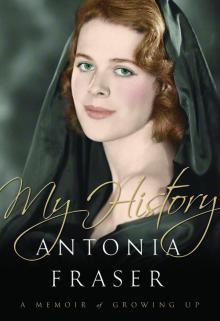 My History: A Memoir of Growing Up
My History: A Memoir of Growing Up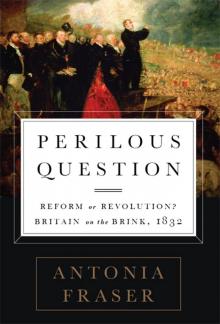 Perilous Question: Reform or Revolution? Britain on the Brink, 1832
Perilous Question: Reform or Revolution? Britain on the Brink, 1832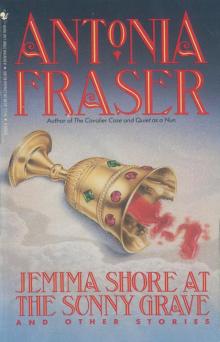 Jemima Shore at the Sunny Grave
Jemima Shore at the Sunny Grave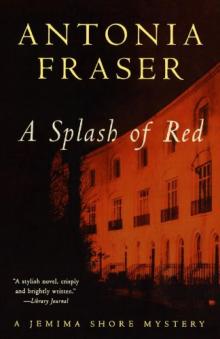 A Splash of Red
A Splash of Red Must You Go?: My Life With Harold Pinter
Must You Go?: My Life With Harold Pinter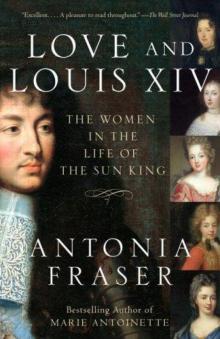 Love and Louis XIV: The Women in the Life of the Sun King
Love and Louis XIV: The Women in the Life of the Sun King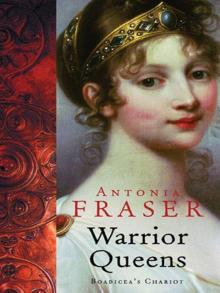 The Warrior Queens
The Warrior Queens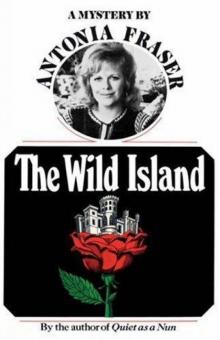 The Wild Island
The Wild Island Quiet as a Nun
Quiet as a Nun Perilous Question
Perilous Question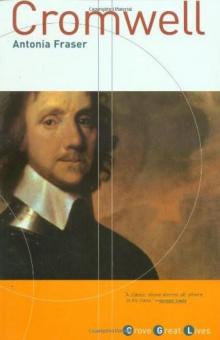 Cromwell, the Lord Protector
Cromwell, the Lord Protector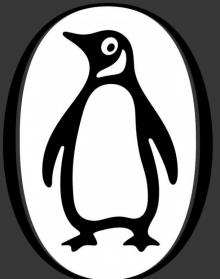 Gunpowder Plots
Gunpowder Plots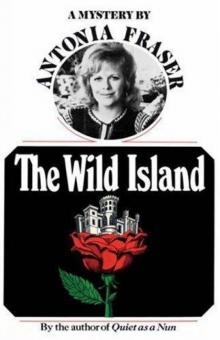 The Wild Island - Jemima Shore 02
The Wild Island - Jemima Shore 02 Gunpowder Plots: A Celebration of 400 Years of Bonfire Night
Gunpowder Plots: A Celebration of 400 Years of Bonfire Night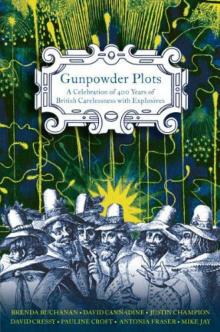 Gunpowder Plots_A Celebration of 400 Years of Bonfire Night
Gunpowder Plots_A Celebration of 400 Years of Bonfire Night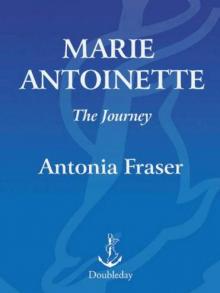 Marie Antoinette
Marie Antoinette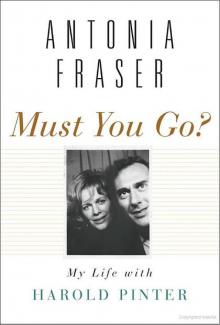 Must You Go?
Must You Go? My History
My History